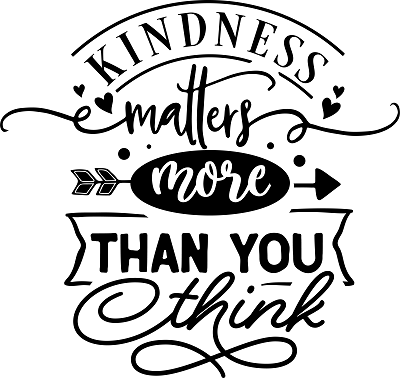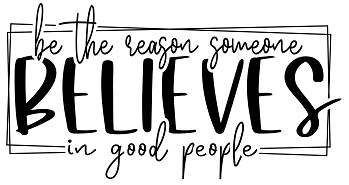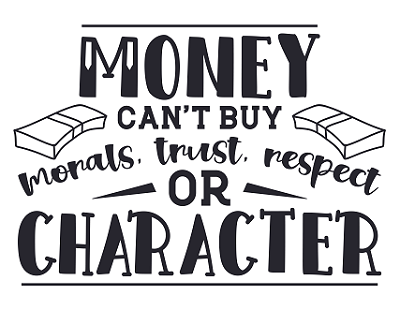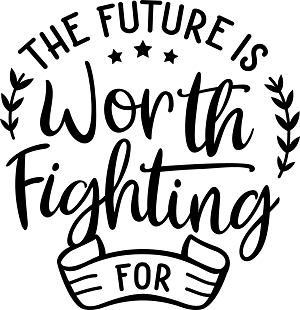 More than ever before, it can feel difficult or even impossible to remain positive and focused on the good in the world today.
More than ever before, it can feel difficult or even impossible to remain positive and focused on the good in the world today.
With so much attention on selfish and negative behaviors in the news and throughout social media, finding a bright spot in your day is often a surprise and welcomed event.
Learning to pay it forward is one way you can make a positive change in the world while inspiring others to focus on what is good and positive in our society. The basic principle of paying it forward is to repay a kindness that has been bestowed upon you by giving to someone else, not to original benefactor.
Let’s examine the origins of paying it forward to understand how it has played a role throughout history, and then we will consider what psychologists have to say about how this type of gesture affects you as well as others.
Finally, I’ll share with you some strategies for how you can pay it forward in your own life. If you are ready to make a positive change in our world, keep reading to learn how now.
The Evolution of Paying It Forward
The principle of paying it forward was first recorded as early as 317 BC in ancient Greece from a play by Menander. Benjamin Franklin even referenced this concept in 1784, describing how we did not bestow upon someone a good deed but merely lent it to them so that they could give it to someone else in need later on. The naturalist and thinker Ralph Waldo Emerson eluded to this notion many times in his writings, as well.
While the sentiment has been noted many times throughout history, the phrase “pay it forward” did not appear in literature until 1916 when Lily Hardy Hammond wrote it. Later, this phrase and the ideals it represents appeared in everything from college sports to the guiding philosophy of Alcoholics Anonymous. Many charitable and humanitarian organizations espouse this same philosophy in their missions and guiding principles.
The principles of paying it forward can even be found within contract law, with the inclusion of third-party beneficiaries. Creditors offer borrowers the option of repaying their loan to a third person instead of to the original lender. Other types of gift and lending scenarios are also based on this idea.
But, it was in 2000, with the publication of a popular novel and then a film called “Pay it Forward” that this notion gained worldwide notoriety. This fictional work described the idea of paying it forward as an obligation to three others who are incapable of doing something on their own. The young character’s hope was that good deeds would spread exponentially around the world, expanding generosity and humanity throughout the planet.
While the general idea of paying it forward does not have the strict limitations and expectations described in this film and novel, this particular adaptation of the philosophy spawned a foundation and movement whose mission is to spread acts of kindness around the world. Many nations in the world have since designated a “Pay it Forward” Day intended to spark random acts of kindness and remind citizens of the power of giving to others without expectation of repayment.
This social movement has inspired countless charitable projects and acts of compassion around the world. From educational projects to financial rewards, from microloans in third-world countries to donations of sick leave to fellow employees, paying it forward has become more familiar and widespread in today’s culture.
Why is Paying It Forward So Powerful?
What exactly is the point of paying it forward? Why has this movement sparked so many projects and acts of generosity around the globe? There are actually some scientific studies that can help us understand the real power behind paying it forward.
It has long been known that performing good deeds makes you happier. Recent research at Stanford University sought to examine this phenomenon even further (Lyubomirsky, 2015). Participants were asked to perform at least five random acts of kindness each week for six weeks. Those in the study were allowed to pick the nature of their bestowed acts and when they wanted to engage in them.
When compared to the control group, who was not required to perform any good deeds, those who performed kind acts reported increased levels of happiness. Those who bestowed all of their weekly required acts in one single day showed the highest level of satisfaction after the study period ended.
What is it about giving to others that enhances your happiness? This question has a complicated answer, but the largest benefit of helping others is that it increases your sense of purpose in life. When you feel that your actions are directly responsible for improving someone else’s life, you feel that you are having a positive influence on the world.
Acts of kindness provide you with a sense of control over your life and the world, too. Paying it forward is a way to enact the change that you would like to see in the world.
Paying it forward in everyday life is not like a clinical trial, though, and you are likely to experience varying levels of happiness “returns” based on different types of deeds. For many, it can be difficult not to know the impact of your deeds on others. Doing something for a stranger can feel great, but not knowing the real impact of your deeds can lead to a decrease in your desire to continue doing altruistic things.
Most people gain the most satisfaction from paying it forward within their existing social circles. When you can see the impact of your effort and know that it is benefiting someone who you know and care for provides sustained happiness and motivation for the giver.
In addition, being kind to others boosts your social capital. When others see you being generous, they learn to appreciate you and are more likely to be helpful to you in return. And those who feel they make the most significant impact or whose recipients show the most substantial appreciation for their efforts also report the most satisfaction and happiness.
What does not seem to make a difference in the level of satisfaction for givers is the level of the generosity. For example, one research study found that it did not matter how much people gave to those in need, only that they had given at all.
And those who give of their time or effort feel just as happy with their choices as those who donate or spend money. In all situations, the giver increases their level of happiness just by giving.
What happens when someone is so appreciative of your good deeds that they want to repay your generosity? In this case, you could accept their offer, or you could simply encourage the receiver to pay it forward. Honoring your kindness by bestowing a kind act on someone else is the foundation of paying it forward, and this represents an opportunity to show someone else how powerful good deeds can really be.
Giving Begets More Giving
Researchers have found that, when good deeds are performed in a community, they are likely to spawn even more acts of kindness (The social contagion of generosity, Tsvetkova and Macy). A simple example of this from 2012. At a Tim Horton’s coffee shop in Manitoba, one customer paid for the order of the person behind her in line.
This led to a chain reaction of similar acts of generosity in the drive-through whereby 226 customers paid for the orders of strangers in line behind them across three hours. These types of generosity “chains” frequently happen today at all kinds of restaurants and tollbooths across North America.
This example highlights how generosity can be socially contagious. This is supported by many research studies that observe that being a recipient of or witnessing a kind deed makes you much more likely to do something kind for someone else. This is true whether or not your actions will be rewarded or directly reciprocated. This is paying it forward in action. Single deeds of generosity can create ripples within a community or social circle.
Without generosity and giving of yourself, you would never be able to form a relationship with someone else. After all, social networks are dependent upon mutual trust between individuals, and unless you can feel secure that someone else will also be there for you, you are probably very unlikely to want to give of yourself to them. Relationships hinge on your understanding that others are there to support you, which is a type of giving.
The very nature of true generosity is, in fact, all about paying it forward. Generosity is, after all, supposed to be unconditional. You do not expect to get anything in return for helping someone. But, because we know how the brain works more now than ever before, we understand that the natural byproduct of generosity is happiness and positivity, which is the ultimate reward.
When you receive generosity from someone else, then, it reminds you of the power of kindness and giving. This spurs your own brain to crave that feeling of happiness when you help someone else, and you are therefore more likely to engage in your own acts of kindness.
The Other Benefits to Paying It Forward
Giving selflessly of yourself has been linked to a number of mental and physical health benefits. For example, those who regularly engage in random acts of kindness or who volunteer regularly are more likely to live longer than those who do not. This outcome could be linked to the increased sense of purpose that giving provides or just to the reduction in stress that is usually accompanied by raised levels of happiness.
Giving selflessly to others has been shown to reduce mortality rates and increase the longevity of participants in numerous studies over the past three decades. Whether participants volunteered, donated money, or performed acts for loved ones or strangers, the added years to their lives was evident, even controlling for other health problems that could potentially shorten one’s life.
Those who give of themselves regularly also often report better relationships and enhanced abilities to solve problems and overcome obstacles in life.
Those who notice the largest impact on their stress levels and overall happiness are those whose actions are more heartfelt and meaningful for them. When you are merely engaging in an altruistic act without any real connection to yourself or your values, you will not enjoy the same mental and physical benefits as those who approach this from a genuine place.
The Downside of Kindness
Like other enjoyable activities, paying it forward and doing kind things for other people can, even with all its benefits, become less interesting or engaging after some time. This is especially true when you repeat the same acts of kindness repeatedly. Your brain craves novelty, and without it, you are more likely to become bored and lose interest in your charitable endeavors.
Just like chores, when you do something the same way day after day, you start to resent or dislike your choices, so be sure you are keeping it interesting. To stave off the monotony, you can change up how you help others or shift gears to focus your efforts on new areas of interest or people.
Social scientists have also studied the effects of doing good deeds versus merely observing them (Pay It Forward Pays Off, Fowler). While it is true that both situations are likely to increase your generosity toward others, in some situations, being a bystander can lull you into complacency.
When you see others helping those in need, it can trick your brain into thinking help is no longer needed and, therefore, there is no need for you to do anything.
Many people find the philosophy or purpose of paying it forward to be very alluring but have difficulty turning intention into action.
Like all goals in life, it is essential to set goals for yourself, make a plan, and hold yourself accountable for your intentions to pay it forward. It can be helpful to enlist the help of someone else or a philanthropic group to keep you motivated
75 Simple Ways to Pay It Forward
The following strategies represent a broad range of ideas for how you could help out someone else. Some of these require money while others just need a little effort and motivation.
Many random acts of kindness provide a small but meaningful result to the recipient instead of life-changing results.
There are many charities and foundations who specialize in paying it forward, so if you are looking for ideas of how to have a bigger impact on the world, just do a quick internet search, and you will locate hundreds of organizations who sole mission is to pay it forward in big and powerful ways.
Here are 75 simple ways you can pay it forward today:
- Say something complimentary to the first five people you see today. Make it a genuine, heartfelt compliment.
- Pay the toll for the driver behind you on the road.
- Write an unsolicited recommendation for a colleague or coworker. Give it to your supervisor or post it on their professional profile on social media.
- Leave a roll of quarters in your local laundromat.
- Write five notes representing positive body image and leave them in the pockets of clothes in a store.
- Tell a parent you encounter in public something nice about their child’s behavior.
- Shovel your neighbor’s driveway or sidewalk after the next snowstorm.
- Deliver flowers to the nurse’s station at your local hospital or nursing home, along with a note of thanks.
- Leave a gift card at the gas pump the next time you fill up.
- Make sure every person in your group conversation feels included and heard.
- Leave a large tip for a service worker who has performed exceptionally well.
- Spend time at the local animal shelter walking dogs and petting cats. Find out what the staff there needs most and provide something they could use for their work.
- Write a letter or send an email to a former teacher who made a difference in your life.
- If you have a positive experience with a customer service representative, sales clerk, or another service worker, take the time to tell their manager about your positive experience.
- Smile at everyone you meet today.
- Organize a clean-up day at your local park, trail, or beach.
- Leave an inspirational note on the mirror of a public bathroom to help the next person feel special or loved.
- Offer to babysit for new parents so they can enjoy some time alone.
- Buy all the newspapers at the local corner shop and give them away to anyone passing by who wants one.
- Call your oldest family member and chat with them as long as they want. Better yet, go visit them in person.
- Find something in your house you are no longer using and post it on social media to give it away to someone for free.
- Every time you walk through a parking lot, grab an empty shopping cart and return it to the kiosk or store.
- Help a stranger you see struggling with a door, heavy box, bulky bag, upset child, or some other problem where you could easily lend a hand.
- Bake cookies or make dinner for your neighbor and leave it on their doorstep.
- Buy coffee for the person behind you in the drive-through line.
- Mow your neighbor’s grass while you are mowing yours.
- Pay the overdue library fees for people at the library.
- Buy a bouquet of flowers and hand them out one at a time to people as they walk by.
- Send coloring books and other activities to a children’s hospital or ward.
- Help someone who has a flat tire or is having car trouble. Give them a ride, call a tow-truck, or just wait with them while they solve their problem.
- Offer to go grocery shopping or run errands for someone who is sick, stressed, or needs some alone time.
- Volunteer to work overtime at work to allow a co-worker to have some time off.
- Send a positive text message to ten different people. They could even be random phone numbers.
- Put coins into parking meters that are about to expire.
- Introduce yourself to new neighbors or coworkers and offer to take them on a tour of the area.
- Put Valentine’s cards on the desks of everyone in your office or in all the mailboxes on your street.
- Leave a positive comment on a website, blog, or social media post.
- Learn the names of everyone you meet in a given day and make an effort to call them by their name the next time you see them.
- Donate your hair to an organization that makes wigs for children with cancer and other diseases.
- Go out of your way to tell a coworker who deserves more recognition how much you appreciate them.
- Make a list of all the things you love and appreciate about your partner and give it to them.
- Purchase extras of your paper products or canned goods and donate them to the local food bank.
- Purchase extras of your hygiene products and donate them to your local homeless shelter.
- Share your umbrella with someone near you during a downpour.
- Leave your mailman some treats or a small gift in your mailbox.
- If you have neighbors or coworkers who speak another language, learn how to say hello and ask how they are in their language.
- Visit a retirement home and teach a class, perform some music, or lead a game for the residents.
- Pass out cold drinks to workers outside on a hot day.
- Send a care package to a soldier overseas.
- Pack an extra lunch and share it with a coworker in your office.
- Leave coupons in the grocery store near the matching products.
- Make a scarf or hat and donate it to someone in need.
- Give your gently worn coat to someone who is living outdoors this winter.
- Send a thank-you card to your local police precinct or fire station to express your gratitude for their service.
- Donate a little time at your community elementary school. You can file papers, read to a child, monitor during lunch in the cafeteria, or help a teacher with a project.
- Buy tickets for the people in line behind you at the movie theater.
- Let someone cut in front of you in line.
- Help someone in your neighborhood out by bringing in their trashcan or watering their flowers.
- Leave dollar bills in the pages of books at the library or bookstore.
- Save the box tops on your foods and donate them to your local school.
- Sign up to be a pen pal to someone in a foreign country or who is currently in jail.
- Leave change taped to the vending machine.
- Buy two ice cream cones and give one to the next child you see.
- Wash your best friend’s car for them.
- Give up your seat on the bus to someone in need.
- Tell your best friend three things you appreciate about them.
- Donate school supplies to your local community center or school.
- Send pictures of beautiful things to people in your life that need a little pick-me-up.
- Write nice notes for each of your family members and leave them under their pillows.
- Tell at least ten people today something you appreciate about them.
- Hold the door for others.
- Set up a time to meet face-to-face with someone you have not seen in a while.
- Send a book to a child you know.
- Offer a ride to an older person in your community who no longer drives.
- Volunteer to rock babies in your hospital’s nursery or NICU.
Final Thoughts
Paying it forward is not just an action, it is a process and a set of beliefs. By embracing the concept of doing good deeds to better the world, you can encourage others to engage in positive actions, as well.
Paying it forward has the capacity to better communities, strengthen your health and happiness, and change someone’s life in dramatic ways.
Whether you choose to dedicate your life to an altruistic profession, to volunteer in your local community, to donate to a favorite charity, or to bestow random acts of generosity on strangers or loved ones, embracing this philosophy and its commitment to good deeds can help others while also helping you.
The notion of paying it forward has stood the test of time because it represents a powerful commitment that we humans have to one another.
It embodies our faith in humanity and our desire as a species to help others who may not be able to help themselves. And that is always a wonderful thing.





